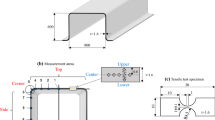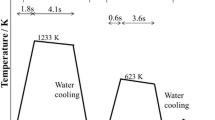Conclusions
-
1.
Quenched and tempered high-strength reinforcing steel has a higher susceptibility to brittle fracture in hydrogen-containing media than cold-drawn patentized steel or steel with a troostite structure.
-
2.
The amount of hydrogen absorbed does not determine the susceptibility to brittle fracture. The highest susceptibility to brittle fracture and crack formation of temper martensite is explained by the presence of large numbers of twins and propagation of cracks preferentially in {112} planes.
-
3.
The highly fragmented structure of the cold-drawn patentized steel has a high resistance to the formation and propagation of cracks under the influence of hydrogen.
Similar content being viewed by others
Literature cited
G. V. Karpenko and R. N. Kripyakevich, Effect of Hydrogen on Properties of Steel [in Russian], Metallurgizdat, Moscow (1962).
S. S. Nosyreva, Stal', No. 6, 542 (1948).
H. Gray and A. Troiano, Metal Progress, No. 4 (1964).
A. P. Gulyaev, Heat Treatment of Steel [in Russian], Mashgiz, Moscow (1953), p. 111.
Additional information
Translated from Metallovedenie i Termicheskaya Obrabotka Metallov, No. 5, pp. 63–66, May, 1973.
Rights and permissions
About this article
Cite this article
Rusev, R., Nikolov, N. Susceptibility to brittle fracture of high-strength reinforcing steels in hydrogen-containing substance. Met Sci Heat Treat 15, 424–426 (1973). https://doi.org/10.1007/BF01166662
Issue Date:
DOI: https://doi.org/10.1007/BF01166662




